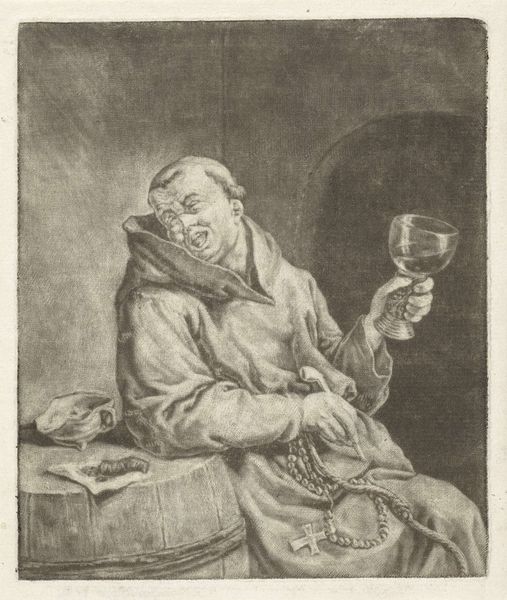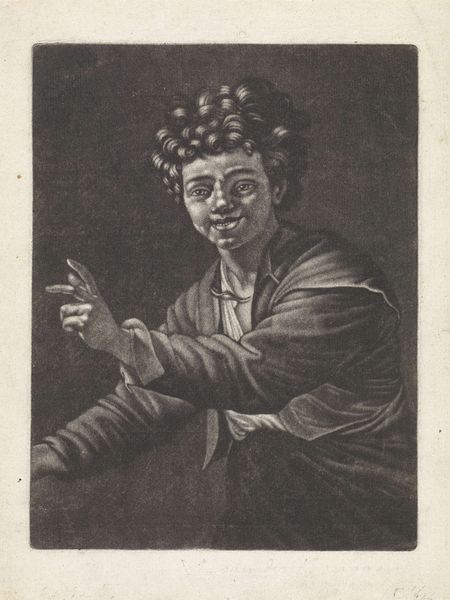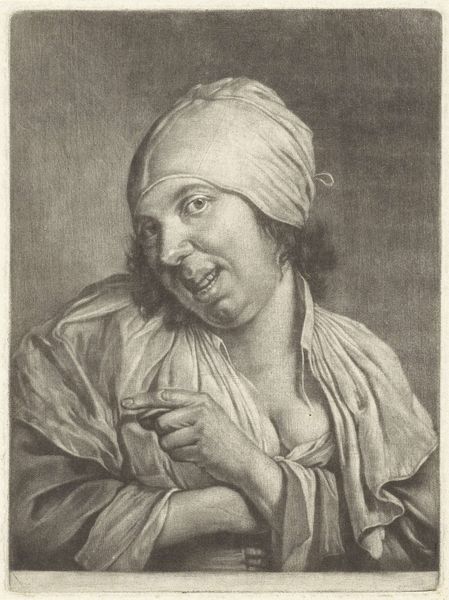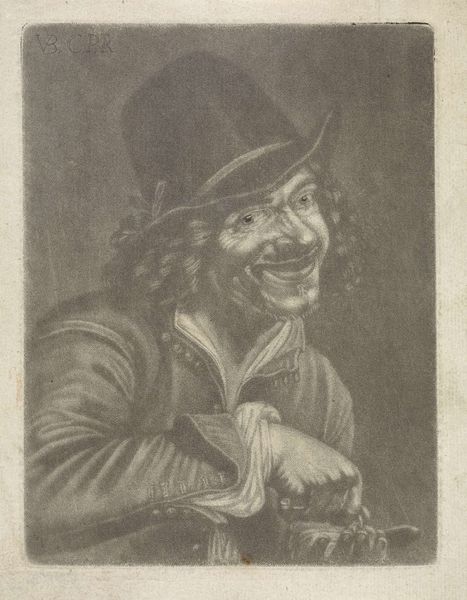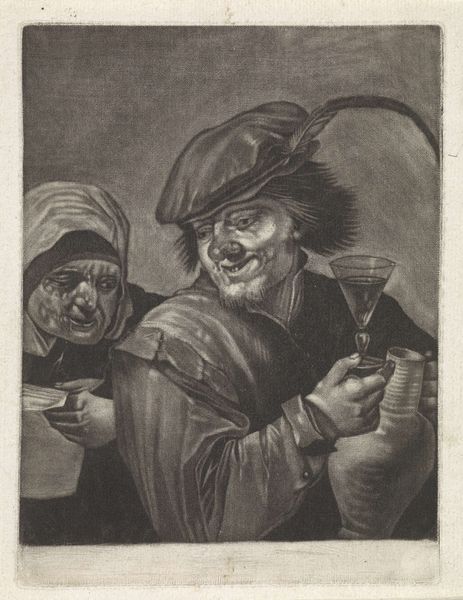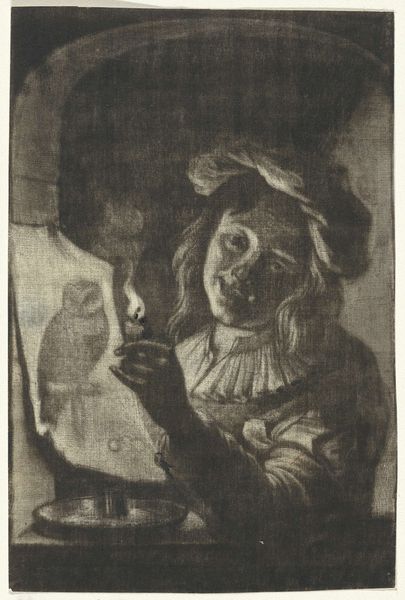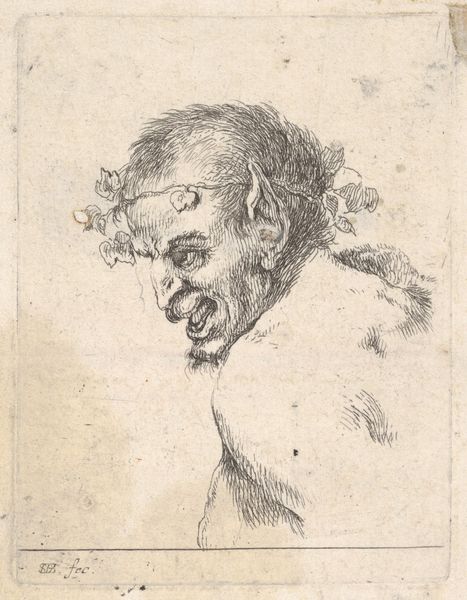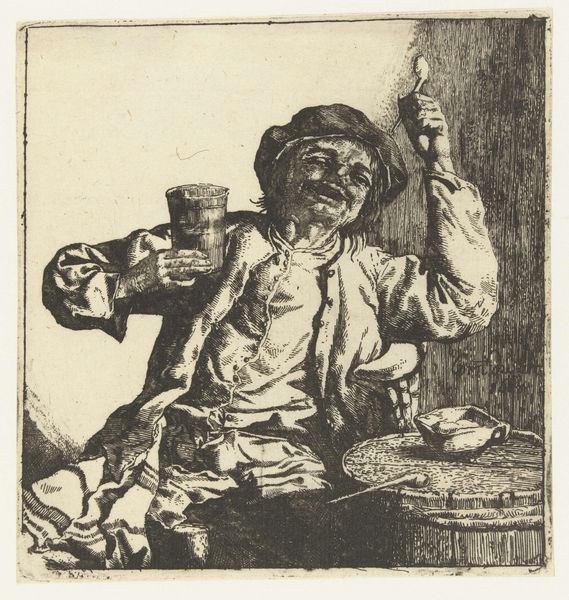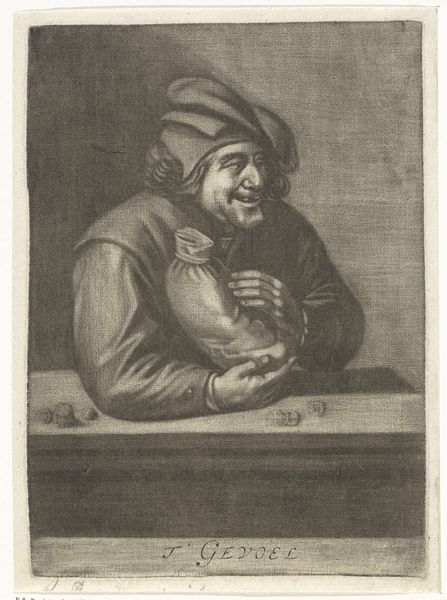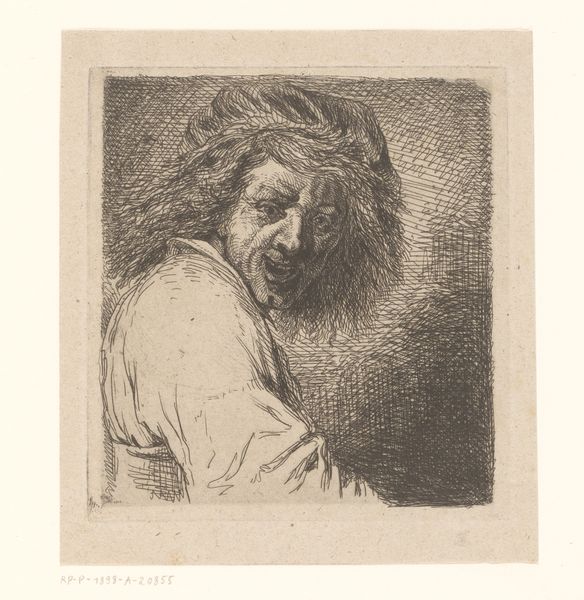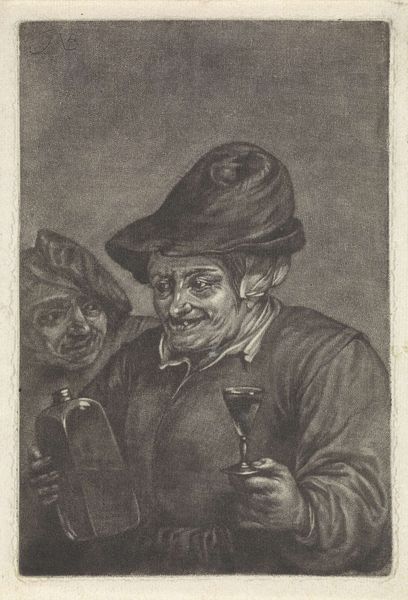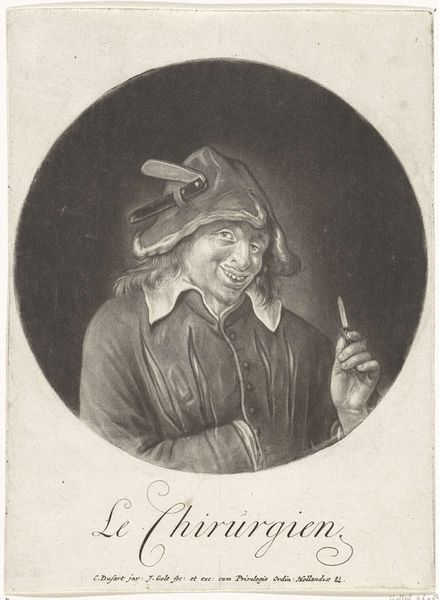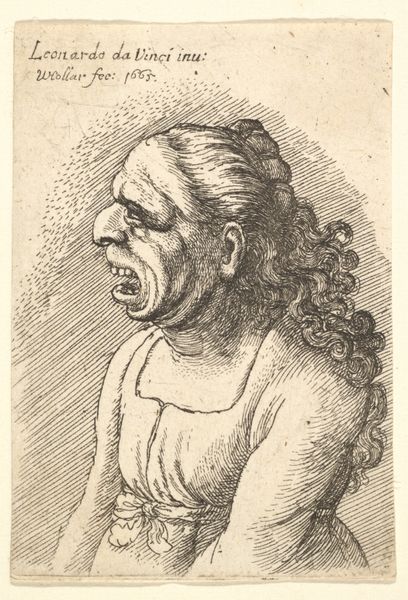
engraving
#
portrait
#
dutch-golden-age
#
caricature
#
old engraving style
#
charcoal drawing
#
portrait reference
#
line
#
genre-painting
#
engraving
Dimensions: height 185 mm, width 141 mm
Copyright: Rijks Museum: Open Domain
Curator: Let's turn our attention to "Laughing Woman" by Cornelis Dusart, dating from somewhere between 1670 and 1704. This engraving, currently held here at the Rijksmuseum, captures a moment of unrestrained mirth. Editor: Immediately, I'm struck by the roughness of the image, but that feels deliberate. The textures achieved in the engraving really emphasize the…unrefined nature of the subject. Is she drunk? Curator: Quite possibly! Dusart worked in the tradition of genre painting, often depicting scenes of everyday life, but frequently with a humorous or moralizing bent. These images, particularly when circulated as prints, became tools for social commentary. Consider who this imagery was intended for, and the values it reflects back. Editor: Right, it makes you wonder about the cultural context, doesn’t it? The detail in her clothing gives me a sense of the kind of fabric that would have been used and the process of producing such a piece. The very labor and the access to drink! All tells a different kind of story. The process of engraving is painstaking too, isn’t it? Replicated for mass consumption. Curator: Absolutely. The print medium was crucial for disseminating ideas and societal norms across wider audiences. What looks like a simple "laughing woman" carries an immense amount of socio-political and cultural information. Perhaps reminding the sober to avoid the excesses demonstrated by the less virtuous elements of society! Editor: Well, there’s an entire consumption culture literally pictured in this work! It's not just *what* she's drinking, but the material of that bottle and who made *that* bottle. All from base materials shaped through industrial labor, to wind up…here, making this woman laugh! The line work gives this an edge, doesn’t it, almost like charcoal drawing…but engraved? Curator: Precisely. By understanding Dusart's place in the art market and the social dynamics of the time, we start to decode the potential meanings of such a work. Editor: Looking at it this way, though… I see the image-making process as another layer. Like you said, the way social codes are shaped and multiplied…It really shifts our attention from a singular image to a set of relations. Curator: A pertinent reminder that art doesn't exist in a vacuum! It's interwoven with social history. Editor: Absolutely! The way the artwork is made impacts its content and meaning just as much as social expectations.
Comments
No comments
Be the first to comment and join the conversation on the ultimate creative platform.
